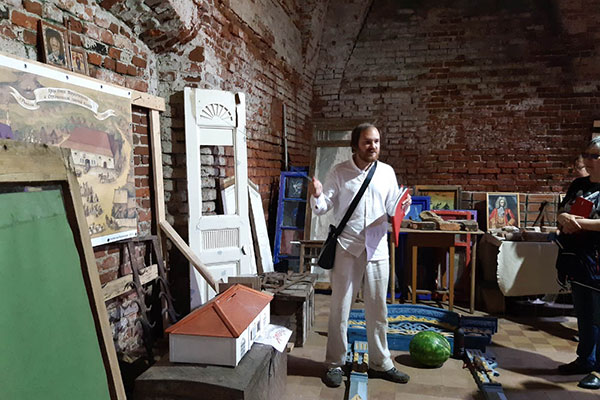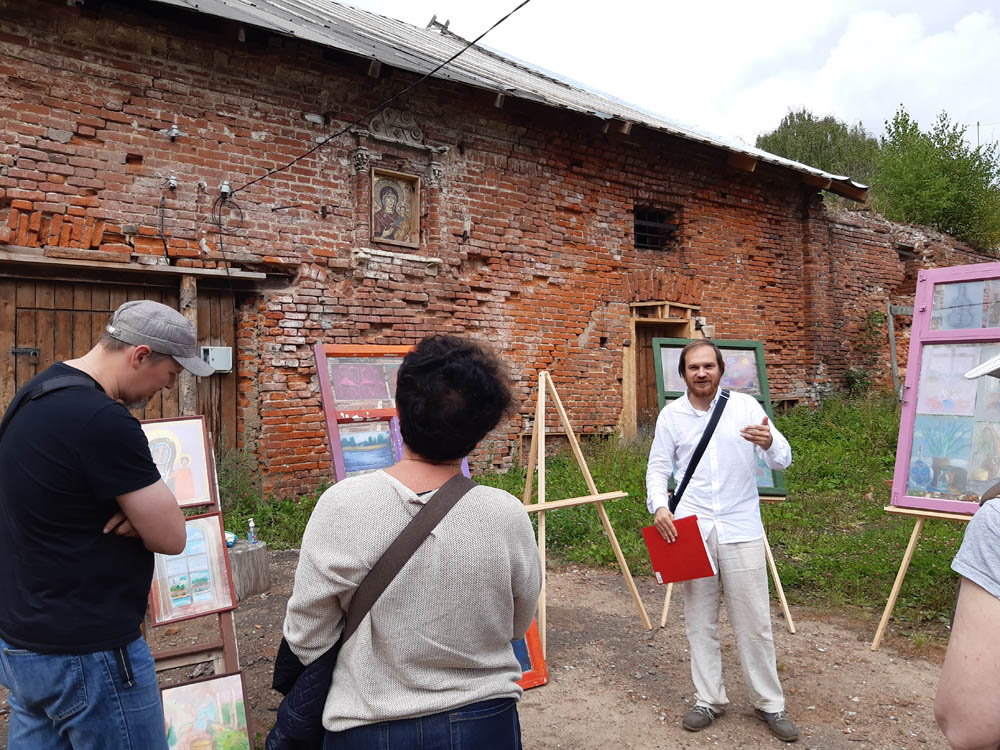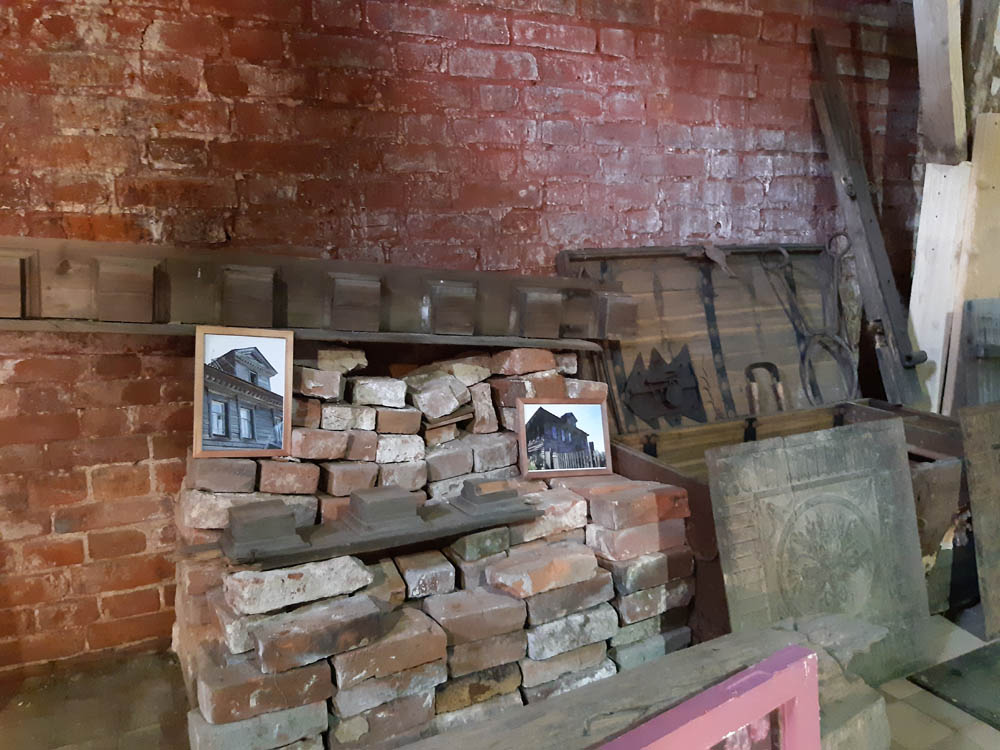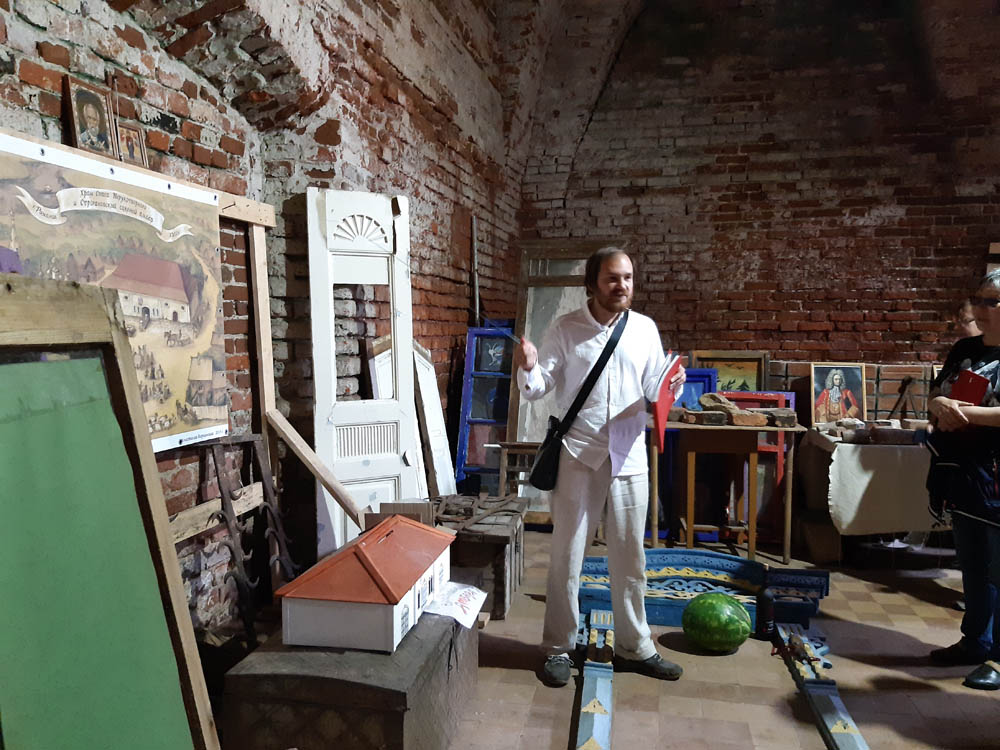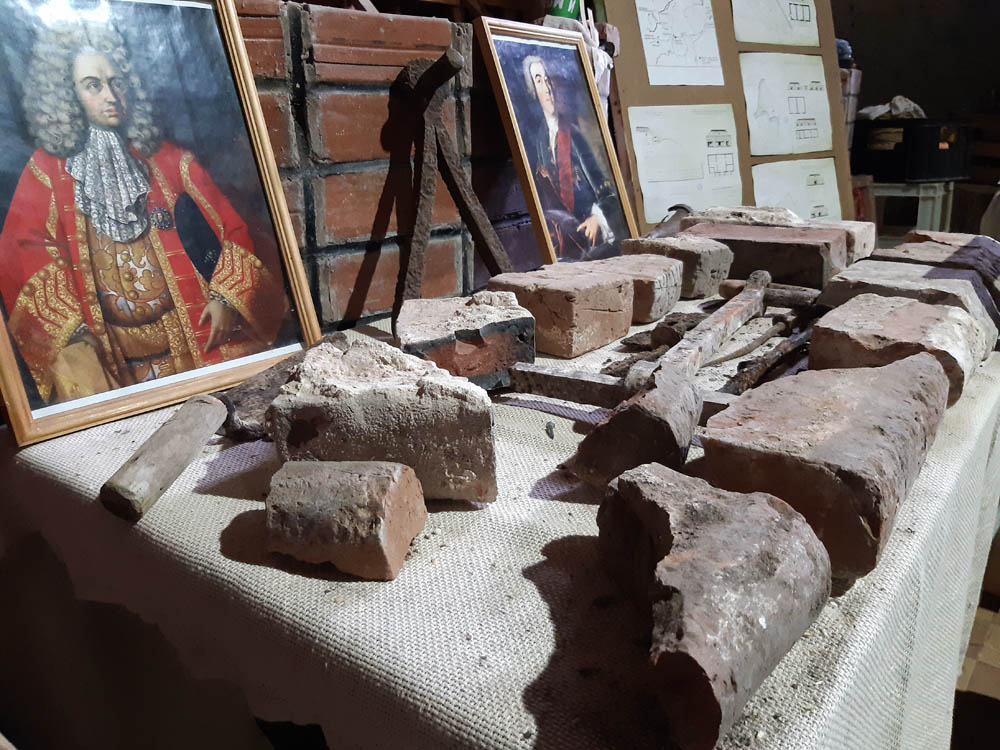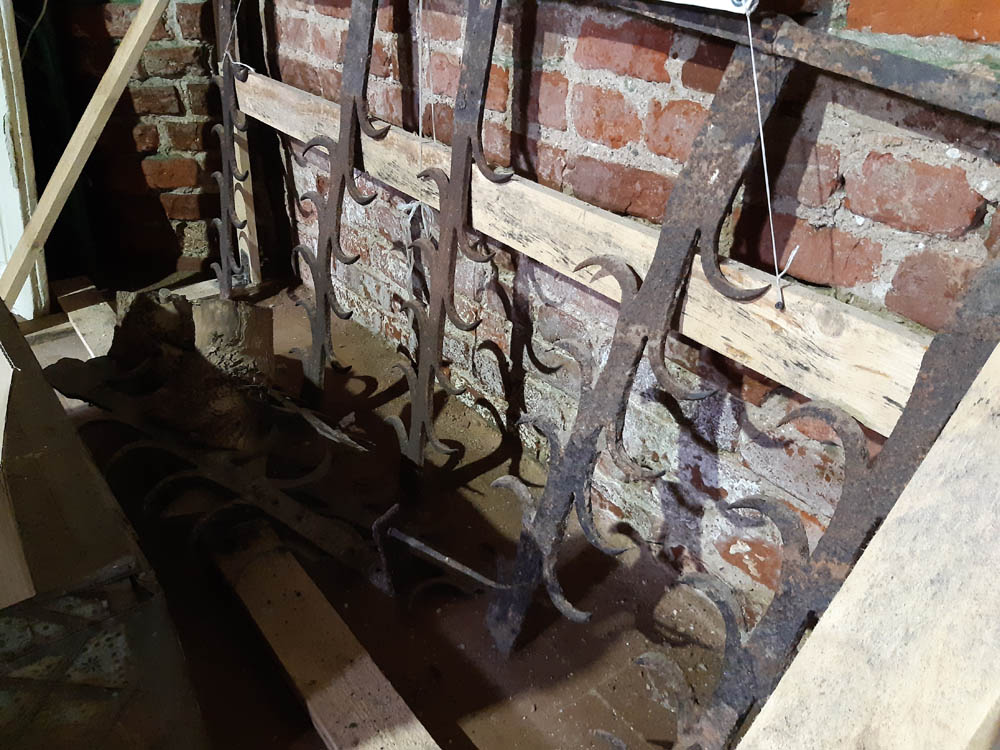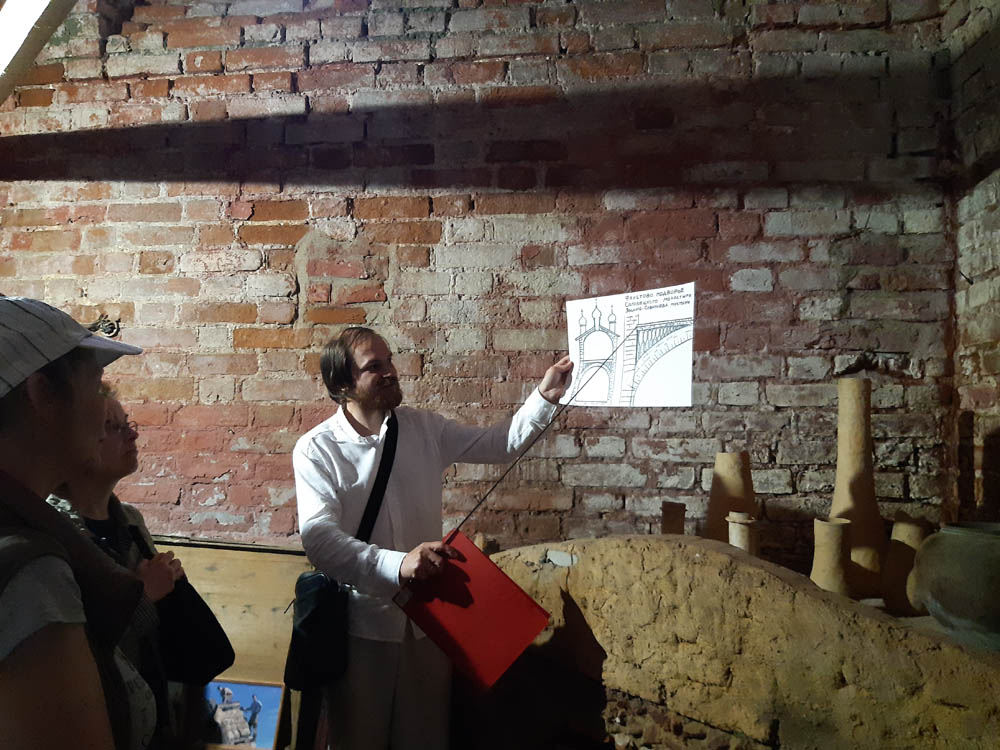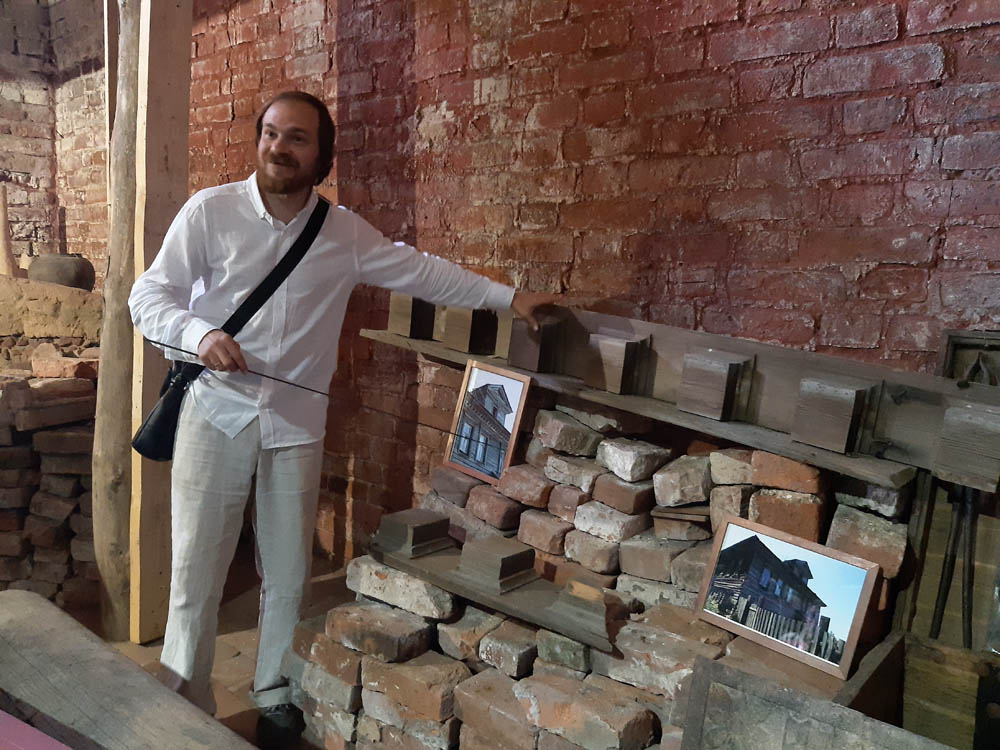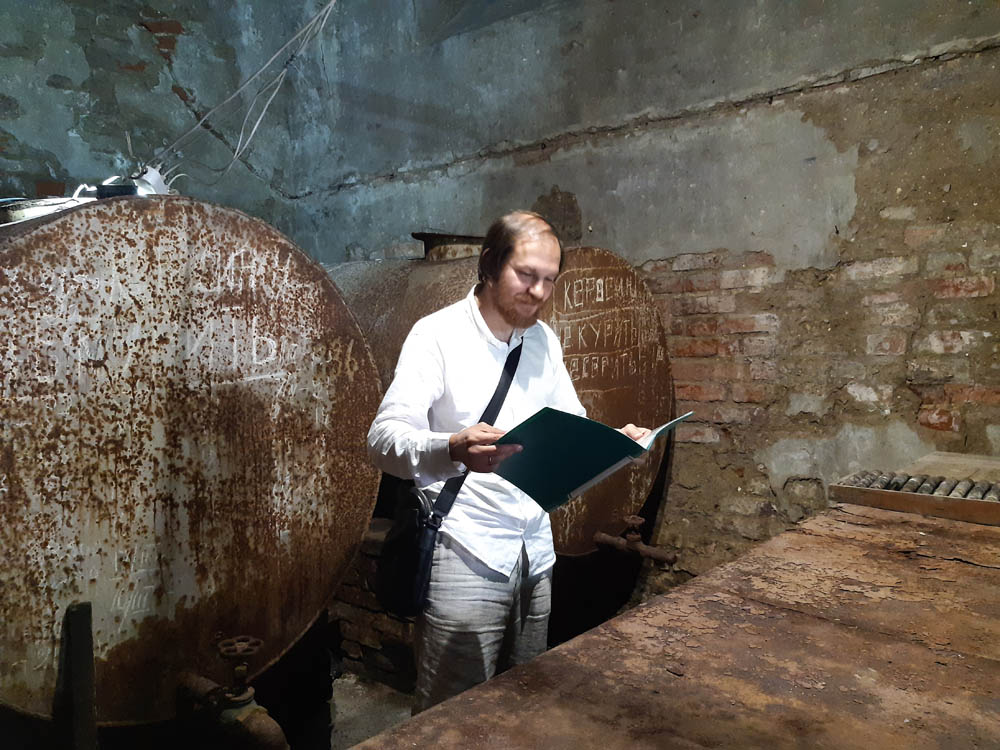Right in the heart of Romanov (Left Bank of the Tutaev city) at the historic market square (current name — Lenin Square, before the revolution of 1917 — Spasskaya Square), near a fire lookout tower (1912) with a great view of the city and the suburbs, there is a cultural monument of federal value, architectural monument of the first half of the 18th century – the salt barn of the counts Stroganov, the oldest civil building in Romanov.
Last August, the team of the Association of Private Museums came here during its expedition to the Yaroslavl region to visit local historian Yuri Starodubov. In 2015, Yuri bought this incredible building from the city not because he, as he put it, got more money than he knew what to do with, but because he saw a real threat to its existence.
The building served as a warehouse for almost 300 years. At first, Stroganov salt was kept in there, the source of wealth for a famous family of Russian merchants and manufacturers, that played a significant role in the land development in Western Siberia and the land to the East of the Ural mountains, later it was replaced with the government’s salt and wine, and after the revolution — grain. In the 1950s, it was turned into an oil shop and in the dashing 90s, one of the premises was occupied by the bar “Malina”. For the last thirty years, the building was abandoned and has fallen into decay.
Although Yuri was born in Moscow, he has long been studying the history of the ancient city of Romanov-Borisoglebsk (Tutaev) on the Volga River, the hometown of many generations of his family. For several years, he took part in the restoration of churches in Romanov as a member of the volunteer organization Restavros, and after that engaged in the activities of the public organization Romanovsky Posad, which funded the local history newspaper Romanovka and published books on the city’s history.
“It was possible to just continue digging in the archives, writing books, and watching the decay of the monument. But I couldn’t do it anymore… I couldn’t live with the fact that I hadn’t even tried to save it, so I decided to at least try,” Yuri Starodubov shared. That’s how the educational charity local history project Stroganov Barn was born. Its goal is to restore the building and turn it into an exhibition center.
The project brought together many people who care. Local residents as well as volunteer groups from Moscow and other cities came to rescue the ancient building. In the first year, they cleaned out overgrown weeds and rubbish (took out ten tractor loads of trash). Restoration architect Alexander Stanislavovich Rybnikov took the measurements and prepared a plan of top-priority works to prevent safety hazards. The necessary information on the history of the building were collected for the restoration works, and based on it, the guided tour “Stroganov Barn on Spasskaya Square” was created.In 2017, with the support of the Moscow Museum of Industrial Culture, an exhibition “From Candles to Kerogaz Primus-Stove” was opened, and a year later, an exhibition “Stroganov Mosaics” dedicated to the Barn’s history was opened as part of the first charity art festival. During the
exhibition, Yuri told all about the surroundings and the architectural features of the Salt Stone Chambers, as this huge stone building divided into several rooms with a total area of 837 square meters was originally called. A month before the festival Yaroslavl artists Vladimir and Albertina Ariskin donated a mosaic icon of Saint Mary of Blachernae to the Stroganov Barn. This family icon, the holy patron of the Stroganov family, was installed into a kiot on the front wall, a rare element for civil architecture. In 2019, the exhibition “From the History of Russian Construction Art” opened, presenting samples of the 18th and the 19th centuries roof materials, millstones (oddly enough, they were used together with boulders in the foundation of altar tables), ceramic tiles, banisters, wooden decorative elements, doors, metal gratings, — all that was saved from the destroyed buildings.
“Last August the Stroganov Barn hosted for the third time the annual final exhibition of the ART-SARAY Children’s Art Studio”. This time it was supported by the incredible harmonica virtuoso Mikhail Kolomytsev and the young violinist Elizaveta Dmitrieva… Tours, festivals, exhibitions, concerts — that’s the true life of the monument, it could not exist without all that,” says Yuri Starodubov.
